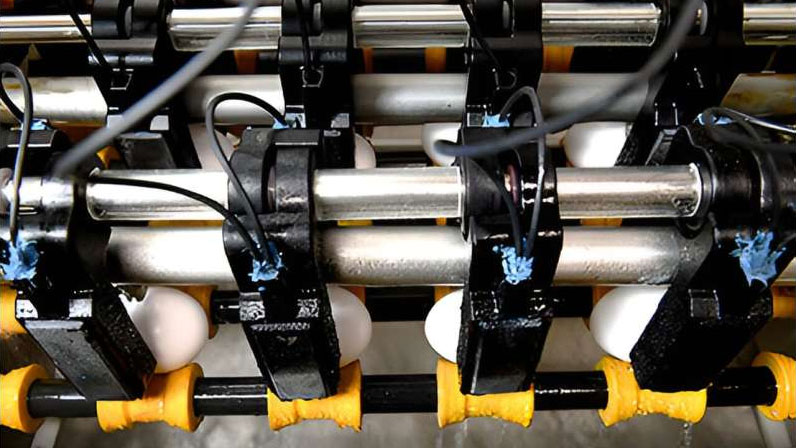March 16, 2024

Every year, the Centers for Disease Control and Prevention estimates that salmonella infects 1.3 million people nationwide. Pasteurizing raw eggs and egg products, a major carrier of salmonella, before they’re shipped can help prevent outbreaks. However, the safeguard hasn’t been widely adopted because of the rudimentary technology behind it.
Less than 3% of the estimated 93 billion eggs Americans consumed in 2023 were pasteurized. Conventionally, raw eggs are pasteurized by submerging them in hot water for nearly 60 minutes.
A thermal process developed at the USDA Agricultural Research Service’s Eastern Regional Research Center in Wyndmoor, Pa., kills the bacteria in half the time. Food scientist Daniela Bermudez-Aguirre says her team has refined the pasteurization process, which uses radio wave technology similar, similar to a home microwave, to kill bacteria from the inside out.
“The main difference between the technologies is frequency,” she says. “Our target temperature is 56.7 degrees C. With radio frequency, we’re able to pasteurize in 24.5 minutes.”
While radio wave technology has been used to pasteurize solid foods such as spices and nuts, Bermudez-Aguirre says pasteurizing raw eggs is more complicated because their liquid yolks are protected by a shell. If the target temperature varies at all, the egg can begin to cook. The center’s new process not only keeps the yolk intact but also extends the egg’s shelf life by at least a few weeks.
“The egg quality, such as the color and other parameters, were also preserved through the processing,” Bermudez-Aguirre says, noting researchers worked closely with Pennsylvania farmers throughout. They continue to be “in constant communication regarding the egg production chain.”
USDA began studying the process in 2012, beginning with a first-generation machine that held one egg,” Bermudez-Aguirre says. “Based on that, they were able to build new generations, for three or four eggs. Hopefully, in the near future, we’ll have a commercial unit that’s able to process millions of eggs.”
USDA is working with New Jersey-based Kuhl Corp. to scale the technology in its fifth-generation machine and intends to bring it to the commercial market soon.
Skip covers, inserts with concave system
The most well-known equipment companies are working toward a world of self-driving machines. Third-party manufacturers are doing their best to support those efforts. Estes Performance Concaves is launching its latest XPR3 Concave System, with a patented bar and design, which the brand says eliminates the need for covers and inserts.
Operators won’t need to change concaves between crops or harvesting conditions, marking a step “towards fully automated harvesting,” a statement from the brand says.
“We are thrilled to introduce the XPR3 Concave System to the market, representing a significant leap forward in harvesting technology for John Deere, Case IH and Fendt combines,” says CEO Brian Robertson. “The XPR3 Concave System is the missing piece in combine automation, providing never-before-seen efficiency, productivity and profitability.”
Real-time data for your crop plan
In the age of connectivity, getting farmers more connected is a major focus for ag equipment and software brands. IntelinAir, an integrated crop intelligence company, is extending interoperability of its digital platform, AgMRI, to CNH’s global operating system — Case IH’s AFS Connect and New Holland’s My PLM Connect.
As part of the collaboration, CNH customers will be able to access AgMRI’s agronomic full-season insights and analytics at the field level in a single platform. AgMRI Insights monitors and tracks in-season agronomic insights for emergence, weeds, crop health and variable drydown, according to a statement.
“Increasing connectivity options for farmers provides more ways to use technology to help improve efficiency on the farm and protect yield potential,” says Kevin Krieg, director of business. “This new connection is one more way farmers can efficiently get insights to make real-time data-driven decisions and inform the next year’s crop plan.”
Read more about:
Food SafetyAbout the Author(s)
You May Also Like






